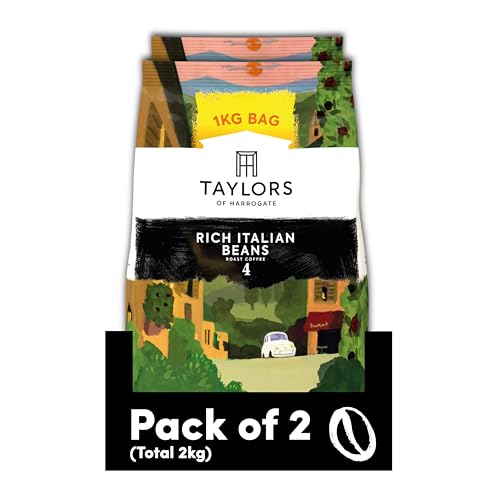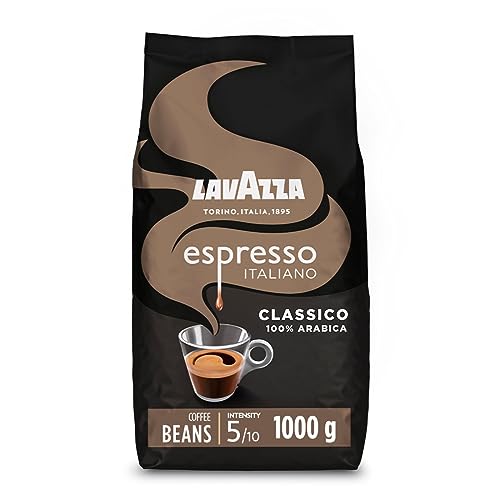The 10 Most Scariest Things About Arabica Coffee Beans 1kg
페이지 정보

본문
 arabica coffee beans 1kg arabica coffee beans (Going to Google)
arabica coffee beans 1kg arabica coffee beans (Going to Google)The arabica bean is one of the most sought-after coffee species. It is cultivated at high elevations along the equator, and requires specific climate conditions to flourish.
 New varieties of coffee have been developed that are more resistant against the effects of climate change and disease. These new varieties come with unique flavors that differentiate them from the others.
New varieties of coffee have been developed that are more resistant against the effects of climate change and disease. These new varieties come with unique flavors that differentiate them from the others.Origin
Arabica coffee beans are the preferred beans for most Western coffee blends and make up about 60% of the world's coffee production. They are more resistant to heat and dryness than other organic coffee beans 1kg varieties making them ideal to grow in warmer climates. They produce an intense and creamy brew that is smooth and delicious. They also contain less caffeine. They are also popular for drinks made with espresso.
Coffea arabica is an evergreen shrub that thrives in higher elevations. It prefers a tropical climate, with temperatures ranging from 15 to 25 degrees Celsius. This plant requires a steady rainfall ranging between 1,200 and 2,200 millimeters a year. It has a high degree of genetic diversity. Researchers have developed many cultivated cultivars. Bourbon and Typica are two of the most significant arabica coffee cultivars currently.
Coffea plants are tall and have simple oval or elliptic-ovate leaves that are 6-12 cm long (2.5-3 in) and 4-8 centimeters wide (2-3 in). The fruits are drupes that contain two seeds that are commonly referred to as coffee beans. They are enclosed by a fleshy outer membrane that is typically red, purple or black and an inner skin that can range from pale yellow to pink.
In the past, people have enjoyed raw coffee beans for their distinctive flavor and stimulating properties. Unlike the Robusta variety of coffee beans, which is used in most blended coffees, arabica beans are best enjoyed roasted to medium or light so that they retain their original properties and flavor. The oldest written accounts of drinking coffee go to the year 1000 BC in the Kingdom of Kefa, Ethiopia, where members of the Oromo tribe crushed the beans and mixed them with fat to form an alcoholic paste. It was consumed as a stimulant.
The origin of coffee is determined by the geographical area and conditions of the region in which the beans are harvested, as well as the cultivation methods used by the farmer. It is similar to apples grown in different regions, and is distinguished from other apples by their distinct flavor and texture. To determine the source of a specific coffee bean, FT/MIR spectrophotometry can be used to identify markers, such as trigonelline and chlorogenic acid that differ depending on the conditions in which the bean was cultivated.
Taste
The flavor of arabica beans is smooth and delicate with chocolate or fruity undertones. It is not as bitter and astringency and is one of the highest-quality varieties that are available. It has a lower level of caffeine than Robusta and Robusta, making it an excellent option for those who want a cup of coffee without the high stimulants.
Several factors can affect the flavor of arabica beans, such as the variety and growth conditions, processing methods, and roast level. There are a variety of arabica, such as Bourbon, Caturra and Kona. Each has its own distinct flavor. The varying levels of sugar and acidity in arabica coffee can also affect the overall flavor profile.
Coffee plants are found in the wild along the equator at higher elevations, but are most commonly cultivated at lower altitudes. The plant produces red, yellow or purple fruit which contain two seeds of green. These seeds are known as coffee beans, and are what give arabica coffee its distinctive flavor. Once the beans are roast, they acquire the familiar brown color and taste that we've all come to be familiar with and enjoy.
After the beans are harvested, they can be processed using either the wet or dry method. Coffee beans that are processed wet are cleaned and then fermented before being dried in the sun. The wet process preserves the arabica coffee's natural flavor characteristics while the dry process produces an earthy and robust flavor.
The roasting of arabica coffee beans is an important step in the production process and can significantly alter the flavor and aroma of the finished product. Light roasts showcase the arabica coffee bean's natural flavors, while medium and dark roasts balance the origin flavors by incorporating the characteristics of roasted coffee beans 1kg. If you're looking for an extra special cup of coffee, try selecting a blend that includes only arabica beans. These premium coffee beans have a unique flavor and aroma that can't be matched by any other blend.
Health Benefits
Coffee is among the most popular hot beverages throughout the world. The reason for this is the rich caffeine content that gives you the energy to get your day going. It is also known for its health benefits and help keep you alert throughout the day. It has a very intense and distinctive flavor that can be enjoyed in numerous ways. You can add it to ice cream or sprinkle it over desserts.
Arabica beans are the most popular and popular choice of all coffee brands as they give a very balanced cup of coffee with a smooth and creamy texture. They are typically roasted at a medium-dark level and are known for their chocolatey, fruity taste. They are also known to have a smoother flavour and less bitterness than other beans like robusta.
The arabica beans' origins date back to the Oromo tribes who first began drinking it in Ethiopia as a stimulant around 1,000 BC. In the 7th century Arabica was officially renamed the coffee bean after it traveled to Yemen, where scholars roasted the beans and then ground them. They then made the first written record of the making of coffee.
Today, coffee beans are grown in over 4,500 plantations across India with Karnataka being the largest producer of it. In 2017-18 the state produced an unprecedented 2,33.230 metric tons of arabica coffee beans 1kg coffee. There is a variety of arabica varieties available in Karnataka which include Coorg Arabica, Chikmaglur Arabica and Bababudangiris Arabica.
Green coffee beans are abundant in antioxidants and contain high amounts of chlorogenic acids which belong to a group of phenolic compounds. They are believed to possess anti-diabetic and cardioprotective properties. When beans are cooked, they lose almost 50-70 percent of these substances.
Along with caffeine, arabica beans contain some minerals and vitamins. They are high in manganese, potassium and magnesium. In addition, beans are also a great source of fibre, which helps in weight loss and lowers cholesterol levels.
Caffeine Content
When roasted and ground and ground, arabica coffee beans have the caffeine content ranging between 1.1% to 2.9% which is equivalent to 84 mg to 580 mg of caffeine per cup. This is considerably less than the caffeine content of Robusta beans that can contain up to 4.4% caffeine. However, the amount of caffeine consumed will depend on a variety of factors such as the method of brewing and the temperature of the water (caffeine is more easily extracted at higher temperatures) and the length of time beans are roasting (a darker roast usually has more caffeine than lighter roasts) and the extraction method.
Coffee also contains chlorogenic acids, which are antioxidants and a part of the phenolic acids. These compounds have been found to decrease the risk of developing diabetes heart disease, liver disease. They also boost the immune system and promote weight loss.
Coffee also contains vitamins and minerals. It contains magnesium, niacin and riboflavin. It also contains potassium and a small amount of sodium. It is crucial to keep in mind that coffee in its pure form, with no sugar or milk, should be consumed in moderation since it can cause diuretic effects on the body.
The coffee plant has an interesting background, as it was discovered by the Oromo tribes of Ethiopia in the year 1,000 BC. It was used by the tribes to provide food on long journeys, but it wasn't until after that it was cultivated into a beverage and was cultivated following the Arabian monopoly was removed which gave it its name. Since then, it is a favorite around the world and has evolved into an international business that has numerous benefits to human health and the environment. The key to its success is the fact that it has a wonderful flavor with a variety of health-promoting properties. If you consume it in moderation, it is an excellent addition to your diet. It is delicious and gives you an energy boost.
- 이전글12 Stats About Content Marketing Agency London To Make You Think Smarter About Other People 24.12.18
- 다음글10 Things That Your Family Taught You About Coffee Machine Filter 24.12.18
댓글목록
등록된 댓글이 없습니다.